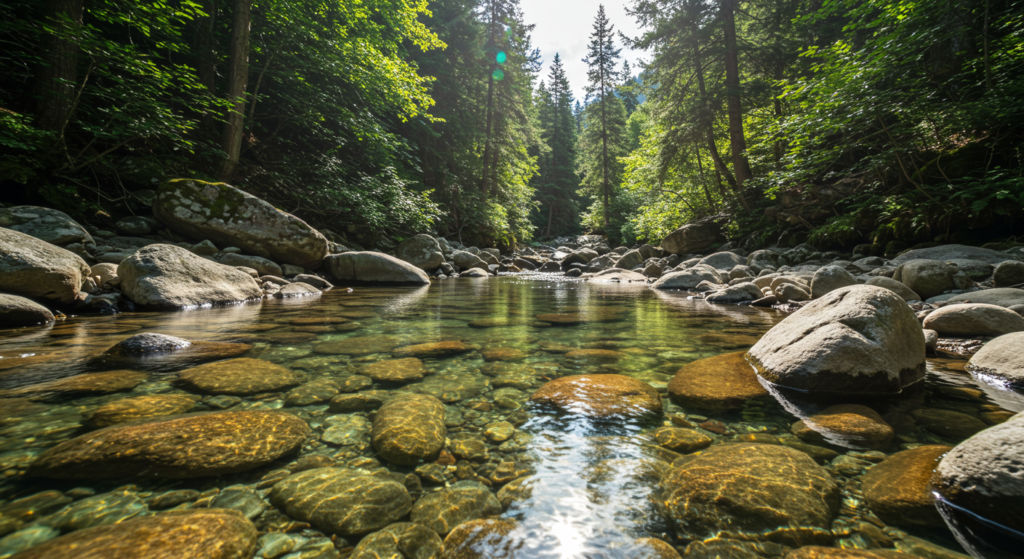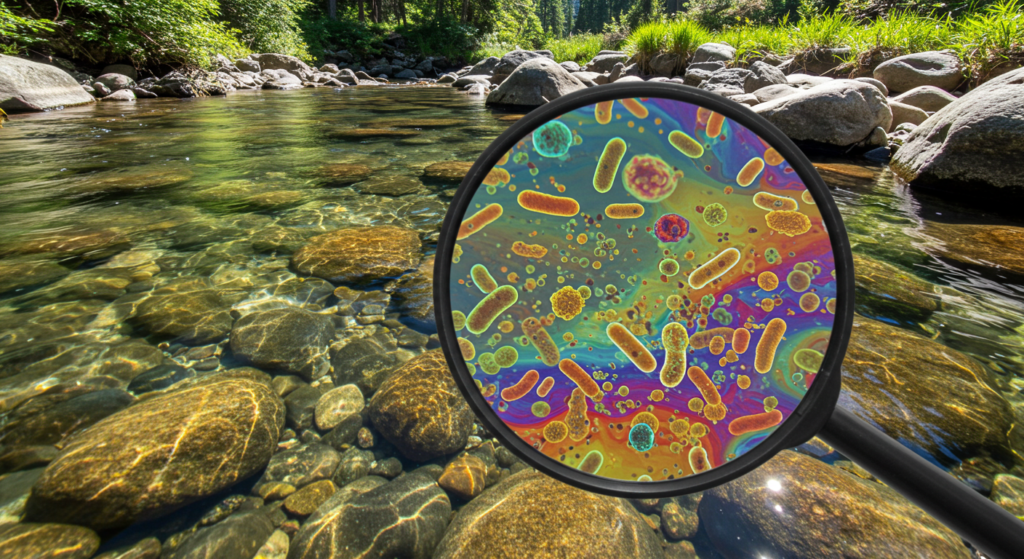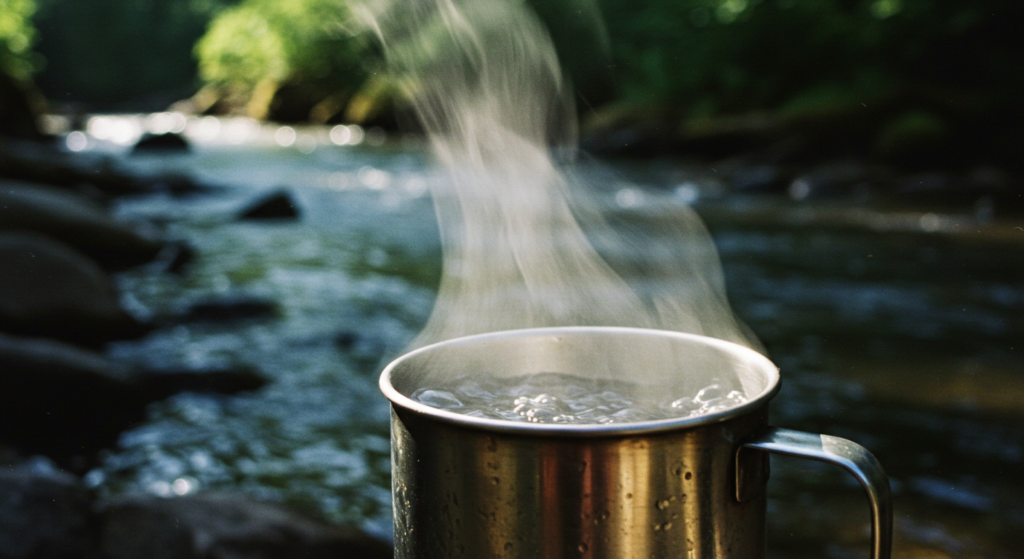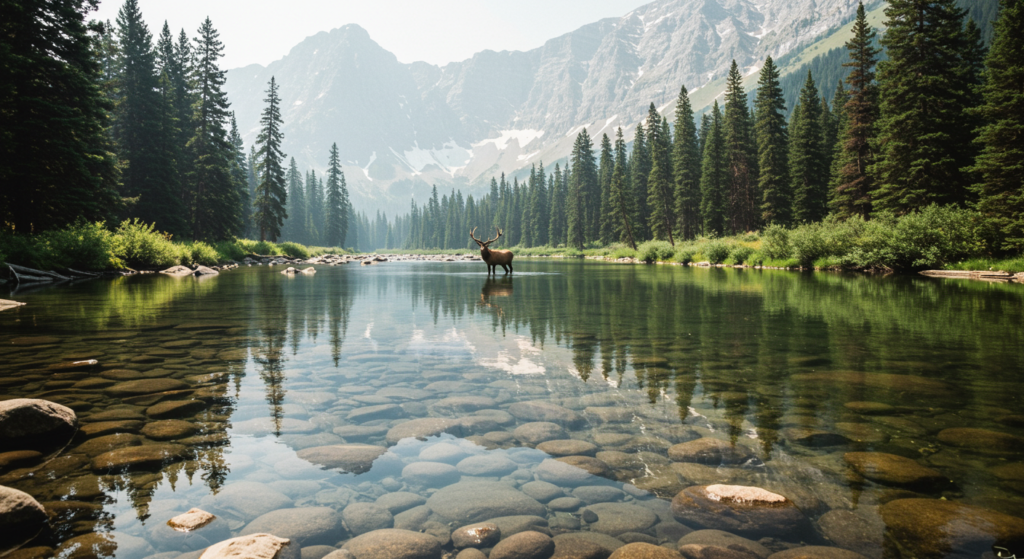The Dirty Truth About Drinking From Streams

Is that crystal-clear stream hiding a nasty secret?
Deep in the backcountry, surrounded by towering pines and fresh mountain air, a hiker pushes forward after hours on the trail. Thirst grows with every step until a glistening stream appears ahead, winding through the forest like a natural oasis. The water looks untouched, pure, and absolutely refreshing, making it tempting to start drinking straight from the source without hesitation.
But beneath its pristine surface, that same water could be hiding deadly bacteria, parasites, and toxic chemicals. A single sip might leave you violently ill for weeks, or worse. Drinking untreated water from outdoor sources is a dangerous gamble, where the threats are invisible, but the consequences are painfully real. Before you cup your hands and take that drink, let’s uncover the hidden dangers lurking in seemingly safe water and how to ensure your next sip doesn’t become a survival nightmare.
Why Can’t You Drink Straight From a Stream?
Many people assume that natural water sources are safe because they’ve been drinking from them for years without incident. You may have even heard someone say, “I drank from a stream all the time as a kid and never got sick!”
But here’s the problem with that logic: luck is not a water purification method.
For every person who escapes unscathed, there are thousands who end up in the hospital with severe gastrointestinal infections, chronic illnesses, or even life-threatening conditions from drinking untreated water.
Let’s talk about what’s really hiding in that “pure” mountain water.
The Invisible Killers in “Pure” Water

Even the clearest, fastest-moving streams can be teeming with hidden dangers: bacteria, parasites, viruses, and chemical pollutants. Unlike murky, stagnant water, which at least looks suspicious, clean-looking water can give a false sense of security while still carrying serious health risks.
Parasites like Giardia and Cryptosporidium originate from animal feces and can contaminate miles of water downstream with just a single infected animal. Viruses such as norovirus and hepatitis A can also be present, especially in areas affected by human or animal waste. Meanwhile, toxic heavy metals and chemical pollutants from industrial runoff, mining, or even natural sources can seep into remote water supplies, making them unsafe even if they appear pure.
The bottom line? Looks can be deceiving. No matter how fresh a water source appears, always purify before drinking—because the dangers are often invisible.
Here are some of the most common, and most dangerous, contaminants found in outdoor water sources:
1. Bacteria: The Stomach-Wrecking Culprits
- E. coli: Often found in water contaminated by animal or human feces. Can cause severe abdominal cramps, bloody diarrhea, and kidney failure.
- Salmonella: Common in rivers and lakes where animals defecate nearby. Symptoms include fever, nausea, vomiting, and extreme dehydration.
2. Parasites: The Unwanted Hitchhikers
- Giardia: This infamous parasite is one of the most common causes of waterborne illness worldwide. A single sip of contaminated water can lead to weeks of explosive diarrhea, bloating, and weight loss.
- Cryptosporidium: Nearly impossible to kill with chlorine alone, this parasite causes crippling stomach cramps, dehydration, and fever.
3. Viruses: The Silent Threats
- Norovirus: Highly contagious and found in contaminated water sources. Causes severe vomiting, diarrhea, and dehydration.
- Hepatitis A: Can lead to liver inflammation, jaundice, fatigue, and long-term health issues.
4. Heavy Metals & Toxic Chemicals: The Long-Term Killers
Even if the water looks clear and tastes fresh, it could be carrying dangerous pollutants from industrial runoff, mining operations, or even naturally occurring deposits.
- Lead & Arsenic: Found in groundwater contaminated by mining or agricultural runoff. Long-term exposure leads to neurological damage, cancer, and organ failure.
- Pesticides & Herbicides: Rainwater runoff can carry toxic chemicals into lakes and rivers, leading to hormonal imbalances and immune system damage.
Even in the wild, no water source is guaranteed safe.
How to Purify Water Properly in the Wild

Water is essential for survival. Go without food for a week, and you’ll be weak, but go without water for just three days, and your body will start shutting down. Dehydration affects brain function, weakens muscles, and can lead to death in extreme cases. When you’re out in the wild, whether on a hiking trip, a backcountry expedition, or in a survival scenario, finding water isn’t the hard part. The real challenge is ensuring that the water you drink won’t make you sick.
Many adventurers make the mistake of assuming that clear, fast-moving streams or high-altitude lakes are safe. But as we’ve seen, even the purest-looking water can be contaminated with bacteria, parasites, viruses, and toxic chemicals. One sip could lead to days of vomiting, diarrhea, dehydration, and potentially life-threatening illness.
So, if drinking straight from a stream is a gamble, what’s the solution? How do you stay hydrated without putting your health at risk?
The key is water purification, removing or neutralizing harmful pathogens and pollutants to make water safe for consumption. There are several effective methods, each with its advantages and drawbacks, depending on the situation. Some are quick and easy, while others require preparation and patience.
When it comes to survival, staying hydrated is non-negotiable, but so is making sure your water is safe. Luckily, there are several reliable methods to purify water in the wild. Each comes with its own benefits and drawbacks, so knowing which method to use in different situations can be a game-changer.
- Boiling Is the Gold Standard
Boiling is the most effective way to ensure water is safe to drink. By bringing water to a rolling boil for at least one minute (or three minutes at higher altitudes), you can eliminate 100% of bacteria, viruses, and parasites. It’s a foolproof method that requires no extra equipment, just heat and time. However, boiling won’t remove heavy metals, pesticides, or chemical pollutants, and it requires a fuel source and a container to heat the water. - Water Filtration Is the Quick and Easy Solution
Filters are a fast and convenient way to remove bacteria, parasites, and sediment from water. Popular options like the Sawyer Squeeze and Katadyn Hiker Microfilter are lightweight, easy to use, and highly effective against most biological contaminants. However, most filters do not remove viruses, making them less reliable in areas with human or animal waste contamination. Filters can also clog over time and require regular maintenance. - Purification Tablets and Drops Offer a Chemical Approach
For those who need a lightweight, portable solution, iodine or chlorine dioxide tablets offer an effective way to kill bacteria, viruses, and protozoa. Simply drop a tablet into your water and wait 30 minutes to 4 hours, depending on the brand and water temperature. While chemical purification is great for emergencies, it doesn’t remove dirt, sediment, or heavy metals, and it can leave an unpleasant aftertaste. - UV Light Purification Is a High-Tech Survival Method
UV purification devices, like the Steripen Ultra, use ultraviolet light to destroy bacteria, viruses, and parasites in seconds. They are compact, easy to use, and highly effective in clear water. However, UV purifiers require batteries or charging, and they don’t remove sediment or chemicals, making them less practical for murky or polluted water sources. - Activated Charcoal Helps Filter Out Toxins
While activated charcoal doesn’t kill bacteria or viruses, it absorbs heavy metals, pesticides, and chemical pollutants, improving both safety and taste. Many high-quality filters include a charcoal component to remove toxins from contaminated water. If chemical pollutants are a concern, using a charcoal filter in combination with another purification method,like boiling or UV treatment, provides a more comprehensive solution.
The Myth of “Clean” Mountain Water

Many outdoor enthusiasts believe that high-altitude streams, far removed from human activity, are safe to drink from. After all, if you’re miles away from civilization, how could the water be contaminated? But the truth is, even the most remote water sources can harbor dangerous pathogens and pollutants, some of which are nearly impossible to detect without proper testing.
- Wildlife Contamination: The Unseen Threat
High-altitude regions may have fewer humans, but they are still teeming with wildlife. Deer, bears, beavers, and other animals frequently defecate near or directly in streams, introducing harmful bacteria and parasites into the water. Giardia and Cryptosporidium, two of the most common culprits of waterborne illness, originate from infected animal feces and can survive in cold mountain water for weeks. Just because you don’t see an animal nearby doesn’t mean the water is clean, contamination can occur miles upstream. - Decaying Organic Matter: A Natural Pollutant
Another overlooked hazard is dead animals decomposing in or near the water source. A single carcass upstream can introduce a flood of bacteria, including E. coli and Salmonella, which can travel downstream undetected. By the time the water reaches you, it may look crystal clear, but it could still be carrying dangerous pathogens that can cause severe illness. - Airborne Pollutants: The Invisible Contaminants
Even at high elevations, water can be tainted by airborne pollutants carried by wind and rain. Pesticides, heavy metals, and industrial chemicals can travel vast distances through the atmosphere before being deposited in remote lakes and streams. Acid rain, caused by pollution from factories and vehicles, can alter the pH levels of mountain water, making it unsafe to drink over time.
The Golden Rule: Always Purify Before Drinking
No matter how fresh and inviting a stream, river, or lake looks, drinking untreated water is a health gamble you don’t want to take. Practicing Leave No Trace principles by avoiding contamination of water sources and properly disposing of waste helps preserve the environment and protect future hikers.
Drinking untreated water can introduce harmful pathogens and toxins into the body, leading to severe dehydration and long-term health complications. Even a single sip from a contaminated source can result in debilitating symptoms that could jeopardize an outdoor adventure or survival situation. Ensuring safe drinking water is not just about convenience; it is a fundamental aspect of responsible outdoor preparedness.
Before you take that sip, ask yourself:
- Is it worth the risk of spending weeks sick with diarrhea?
- Do you want to end up hospitalized with kidney damage?
- Wouldn’t it be smarter to take two extra minutes to purify your water?
The bottom line: Boil it, filter it, purify it, but never drink it straight. Your body will thank you later.
